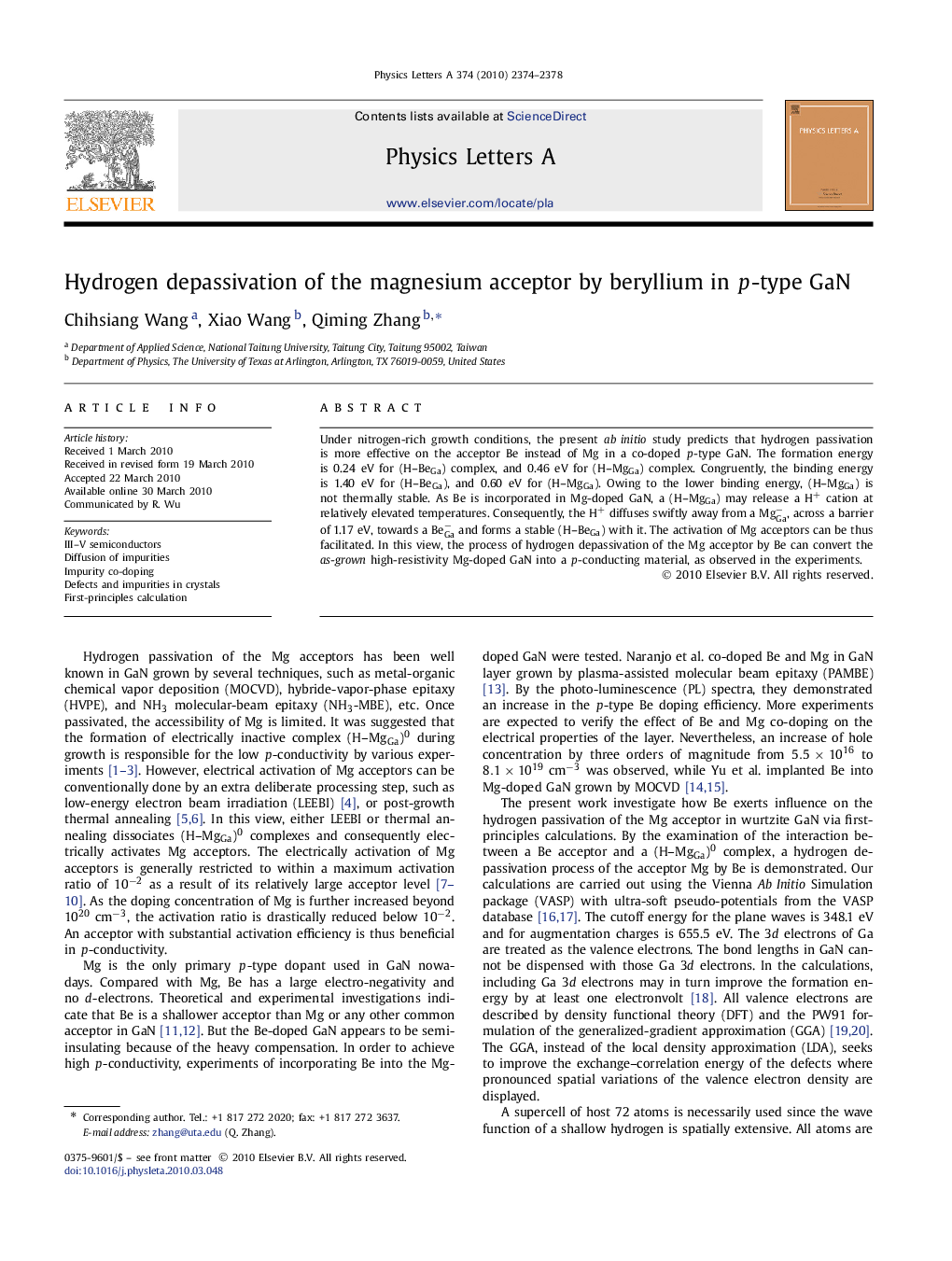| Article ID | Journal | Published Year | Pages | File Type |
|---|---|---|---|---|
| 1865501 | Physics Letters A | 2010 | 5 Pages |
Abstract
Under nitrogen-rich growth conditions, the present ab initio study predicts that hydrogen passivation is more effective on the acceptor Be instead of Mg in a co-doped p-type GaN. The formation energy is 0.24 eV for (H-BeGa) complex, and 0.46 eV for (H-MgGa) complex. Congruently, the binding energy is 1.40 eV for (H-BeGa), and 0.60 eV for (H-MgGa). Owing to the lower binding energy, (H-MgGa) is not thermally stable. As Be is incorporated in Mg-doped GaN, a (H-MgGa) may release a H+ cation at relatively elevated temperatures. Consequently, the H+ diffuses swiftly away from a MgâGa, across a barrier of 1.17 eV, towards a BeâGa and forms a stable (H-BeGa) with it. The activation of Mg acceptors can be thus facilitated. In this view, the process of hydrogen depassivation of the Mg acceptor by Be can convert the as-grown high-resistivity Mg-doped GaN into a p-conducting material, as observed in the experiments.
Related Topics
Physical Sciences and Engineering
Physics and Astronomy
Physics and Astronomy (General)
Authors
Chihsiang Wang, Xiao Wang, Qiming Zhang,
